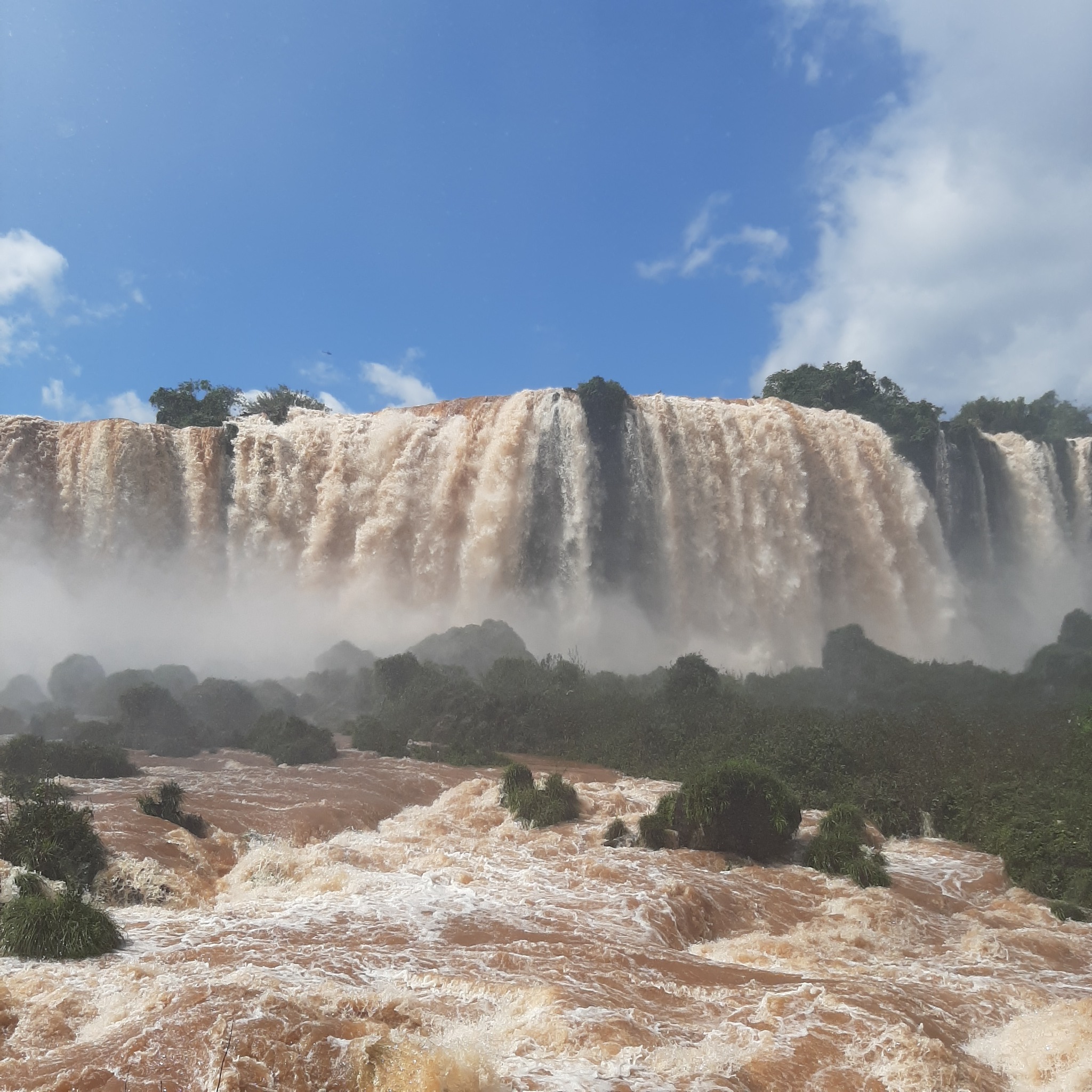
Why the Earth Opened at Iguazú Falls
Our guide Vlas tells us several times that we are lucky today. Recent rainstorms raised water levels, and the cascades are healthy, full. The falls are in good spirits.
The falls are Iguazú Falls, a 2,700-metres-wide chain of almost 300 waterfalls between Argentina and Brazil. More than twice as wide as Niagara Falls, Iguazú cannot be taken in with a single glance, so we are glad Vlas with his local knowledge dealing with the unruly falls will lead us through the adjacent national parks over the next two days.
He explains that climate change has been disturbing the region’s weather patterns for years, now bringing more rain in the winter months. The inconsistency of trends complicates long-term planning for the locals, tourism businesses and governments while reminding everyone of the uncontrollable, unknowable temperament of Iguazú. Vlas points to treetops of the subtropical jungle to show the water level from 2014 when record flooding *filled* the 80-metre ravine, causing deaths and destruction in the villages along the river.
The Iguazú River began flowing 20,000 years ago over this huge chasm, itself estimated to be 120 million years old and a remnant of volcanic eruptions. The area’s indigenous Guaraní people, whose descendants live where Paraguay, Brazil and Argentina meet, believe the earth cracked open for a different reason. A god fell in love with Naipí, a beautiful young woman living beside the Iguazú River. Disguised as a boy, the god visited her parents whom he asked for, and received, her hand in marriage. Naipí, however, was in love with Tarobá and after finding out the god’s plan, the two young lovers fled in a canoe on the river. Furious, the god roared and cleaved the river and earth to stop them, creating an enormous chasm we see today filled with violent, powerful waterfalls. The god condemned the couple to eternal misery: Naipí as a rock along the waterfall cliffs, Tarobá a palm tree at the water’s edge, forever looking up at his distant love.
There’s the theory that the earliest people did not separate gods, humans, animals and nature, that they seamlessly lived between the sacred world and daily survival. To the early Guaraní, life along the river and near the falls meant listening to its rumbles and watching how the water rose or dropped every day. It provided food and travel, and as easily took away family and homes. In the Guaraní myth, there is no message about war or theft of food, gods are not angry about inadequate sacrifices. Neither is this about generosity or overabundance.
Instead, the earliest people knew something about the rougher textures of love: fear of losing it, jealousy, longing. And they had the wisdom to equate the intensity and power of heartache, invisible and one-of-a-kind, to the thunderous Iguazú overwhelming everyone who experiences it.
We see Iguazú Falls as a warning for climate change, the Guaraní people show another, for love denied.
Post a comment